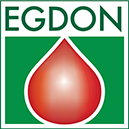Egdon Resources plc (AIM:EDR) is pleased to announce the results of the second Penistone Flags flow test at the Wressle-1 oil and gas discovery in licence PEDL180 located to the East of Scunthorpe, where Egdon operates with a 25% interest.
Zone 3a in the Penistone Flags was perforated over a 7.5 metre interval and has produced good quality oil with a gravity of 33o API. A total of 98.5 barrels of oil were recovered during the test (of which flow induced by swabbing operations produced 34.3 barrels of oil). This equates to approximately 77 barrels of oil per day (bopd).
To date, the Wressle-1 well has flowed oil and gas from three separate reservoirs, the Ashover Grit, the Wingfield Flags and the Penistone Flags. The flow test result from Zone 3a has confirmed the presence of an oil column below the gas leg in Zone 3 of the Penistone Flags.
The downhole pressure and oil sample data from all tests will now be interpreted and integrated into an updated field model to inform future development planning. The next steps in evaluating the discovery will be to undertake a pumped extended well test (EWT) of the Ashover Grit and Penistone Flags oil intervals to quantify the production levels that could be attained during production.
Commenting on the test results and the planned forward programme at Wressle, Mark Abbott Managing Director of Egdon Resources said;
“The results from Wressle continue to be very positive. The latest test has confirmed the presence of an oil column below the gas zone in the Penistone Flags, albeit in tighter sandstones. To date the well has successfully flowed hydrocarbons from four discrete intervals, with the Penistone Flags delivering a facilities restricted gas flowrate of 1.7 mmcfd, plus an aggregate 89 bopd; free-flowing rates of up to 182 bopd and 0.46 mmcfd from the Wingfield Flags and 80 bopd from the Ashover Grit. This totals 710 barrels of oil equivalent per day from all zones.
We are now planning a pumped EWT to validate the optimised production potential that could be obtained from the Wressle discovery. We will now focus on integration and interpretation of the engineering and geotechnical data that will provide the information needed to quantify the resource volumes and optimise the field development and monetisation options. The EWT is planned to commence in mid May with operations expected to continue for up to two months.”

